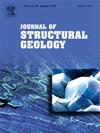Fault detection based on U-Net and GNN integration
IF 2.9
2区 地球科学
Q2 GEOSCIENCES, MULTIDISCIPLINARY
引用次数: 0
Abstract
Current fault detection methods mainly take advantage of a convolutional neural network, simplified U-Net, for seismic image semantic segmentation, which is a computer vision task aimed at generating a dense pixel-wise segmentation map of an image, where each pixel is assigned to a specific class or object. However, these methods face challenges such as unclear segmentation boundaries and limited receptive fields, which hinder the model's capability to detect all features of the fault. To address these issues, this paper proposes a method based on the integration of Graph Neural Network (GNN) and U-Net, referred to as GNU-Net, which incorporates fault graph structures and graph computation modules into U-Net. This approach aims to expand the receptive field, clarify segmentation boundaries, and optimize fault segmentation and continuity analysis through a joint loss function. The method consists of five modules: graph construction, data augmentation, fault segmentation, fault continuity analysis, and joint training. The graph construction module grids the fault labels with a grid edge length of 8 voxels, sets vertices at the locations where the fault intersects the grid, and selects representatives from the voxels labeled as faults within each grid as vertices. The dilation function is applied to expand the fault voxels in the labels and construct a velocity field, in which the geodesic distance between vertices is computed to establish connections between vertices. Data augmentation of the 3D seismic data and fault labels is achieved by rotating the images. A custom rotation matrix is applied to transform the vertex feature coordinates of the graph structure, significantly increasing the size and diversity of the training dataset. The fault segmentation module employs a simplified U-Net with square convolution kernels, and the segmentation loss includes both Dice and binary cross-entropy losses. The fault continuity analysis module leverages a graph neural network with irregular convolution kernels to capture macroscopic fault features and enhance fault continuity, employing a connection loss based on binary cross-entropy. Compared to the original U-Net, the modified GNU-Net achieves a fault detection accuracy of 97.39 % on the testing set, an improvement of 3.96 % over the original U-Net.
基于U-Net和GNN融合的故障检测
目前的故障检测方法主要利用卷积神经网络(简化的U-Net)进行地震图像语义分割,这是一项计算机视觉任务,旨在生成图像的密集逐像素分割图,其中每个像素被分配到特定的类别或对象。然而,这些方法面临分割边界不清晰和接收域有限等挑战,这阻碍了模型检测故障所有特征的能力。为了解决这些问题,本文提出了一种基于图神经网络(GNN)和U-Net相结合的方法,将故障图结构和图计算模块整合到U-Net中,称为GNU-Net。该方法旨在通过联合损失函数扩展接收野,明确分割边界,优化故障分割和连续性分析。该方法由图构建、数据增强、故障分割、故障连续性分析和联合训练五个模块组成。图构建模块以网格边长为8的体素对故障标签进行网格化,在故障与网格相交的位置设置顶点,并从每个网格内标记为故障的体素中选择代表作为顶点。利用扩展函数对标签中的故障体素进行扩展,构造速度场,计算顶点之间的测地线距离,建立顶点之间的连接。通过旋转图像实现三维地震数据和断层标签的数据增强。应用自定义旋转矩阵变换图结构的顶点特征坐标,显著增加训练数据集的大小和多样性。故障分割模块采用简化的U-Net平方卷积核,分割损失包括Dice和二值交叉熵损失。故障连续性分析模块利用具有不规则卷积核的图神经网络捕获宏观故障特征,利用基于二元交叉熵的连接损失来增强故障连续性。与原来的U-Net相比,改进后的GNU-Net在测试集上的故障检测准确率达到97.39%,比原来的U-Net提高了3.96%。
本文章由计算机程序翻译,如有差异,请以英文原文为准。
求助全文
约1分钟内获得全文
求助全文
来源期刊

Journal of Structural Geology
地学-地球科学综合
CiteScore
6.00
自引率
19.40%
发文量
192
审稿时长
15.7 weeks
期刊介绍:
The Journal of Structural Geology publishes process-oriented investigations about structural geology using appropriate combinations of analog and digital field data, seismic reflection data, satellite-derived data, geometric analysis, kinematic analysis, laboratory experiments, computer visualizations, and analogue or numerical modelling on all scales. Contributions are encouraged to draw perspectives from rheology, rock mechanics, geophysics,metamorphism, sedimentology, petroleum geology, economic geology, geodynamics, planetary geology, tectonics and neotectonics to provide a more powerful understanding of deformation processes and systems. Given the visual nature of the discipline, supplementary materials that portray the data and analysis in 3-D or quasi 3-D manners, including the use of videos, and/or graphical abstracts can significantly strengthen the impact of contributions.
 求助内容:
求助内容: 应助结果提醒方式:
应助结果提醒方式:


